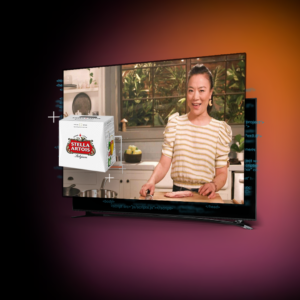Connected TV: What is Old is New Again

Authored By: Keith Kazerman, SVP CTV Revenue at TripleLift
Connected TV is front and center. In 2021, folks got busy building, testing and solving. Brainpower and resources were put against establishing key strategic and operational pillars needed for a flourishing CTV ecosystem—Programmatic trading; backend interoperability; brand safety; identity resolution; and of course measurement. Commercially, however, we’re falling short.
How do we convince brands to commit more ad dollars to CTV to keep pace with the viewership growth and increasing investments in operational pillars? While infrastructure is critical, explaining the strategic and commercial imperative of CTV to brand marketers in a pithy and powerful way is Job One.
CTV players should deliver an anthemic message. At the end of the day, publishers will optimize yield and brands will max their ROAS and business outcomes if, and only if, consumer engagement is high. New bleeding edge transactional mechanics are sexy, but the name of the game remains—“how do I give people the right experience and keep them engaged with my content?” The good news is that all of the technological innovation happening in our business can raise the bar even higher for in-content/show engagement.
We are on the cusp of taking the next big step in creating a viewer experience way more engaging than the traditional interruptive, often annoying, model anchored by the :30 spot.
The throughline of this evolution winds its way back to the beginning. Back in the 50’s, the likes of Procter & Gamble built our industry by underwriting radio shows and early soap operas, integrating their SKUs into these shows. Early product placement was the foundation to a powerful engagement tool that evolved over the decades. Fast forward to the early aughts, when Mark Burnett reimagined product placement, capitalizing on ad-skipping fears stoked by TiVo and other first generation DVRs. “Product Placement” became “Product Integration” and properties like “Survivor” and “The Apprentice” became laboratories for more seamlessly weaving brands into non-scripted narratives. Those shows paved the way for the next generation of product integrations like Peloton in “Billions” and Omaha Steaks in Gordon Ramsay’s “Hell’s Kitchen”.
Fast forward to today. AI and Computer Vision technology, which have both contributed to the advancement of native advertising across the web, are now being used to refine product integration in CTV. While the delivery of product integrations has been refined, how they’re bought and sold has up until this point in time remained unchanged. But with programmatic buying technology, what was once a high-touch, manual integration function can be automated, efficient and scalable. A product integration marketplace powered by programmatic technology means the true value of integrations can be realized.
Programmatic buying capabilities have been widely adopted by the buying community. In the last year alone, programmatic CTV spend grew by 82.4% compared to the previous year according to eMarketer. By applying that same technology to integrations, we can take the next big step in the digital transformation of TV advertising.
The post Connected TV: What is Old is New Again appeared first on TripleLift.

